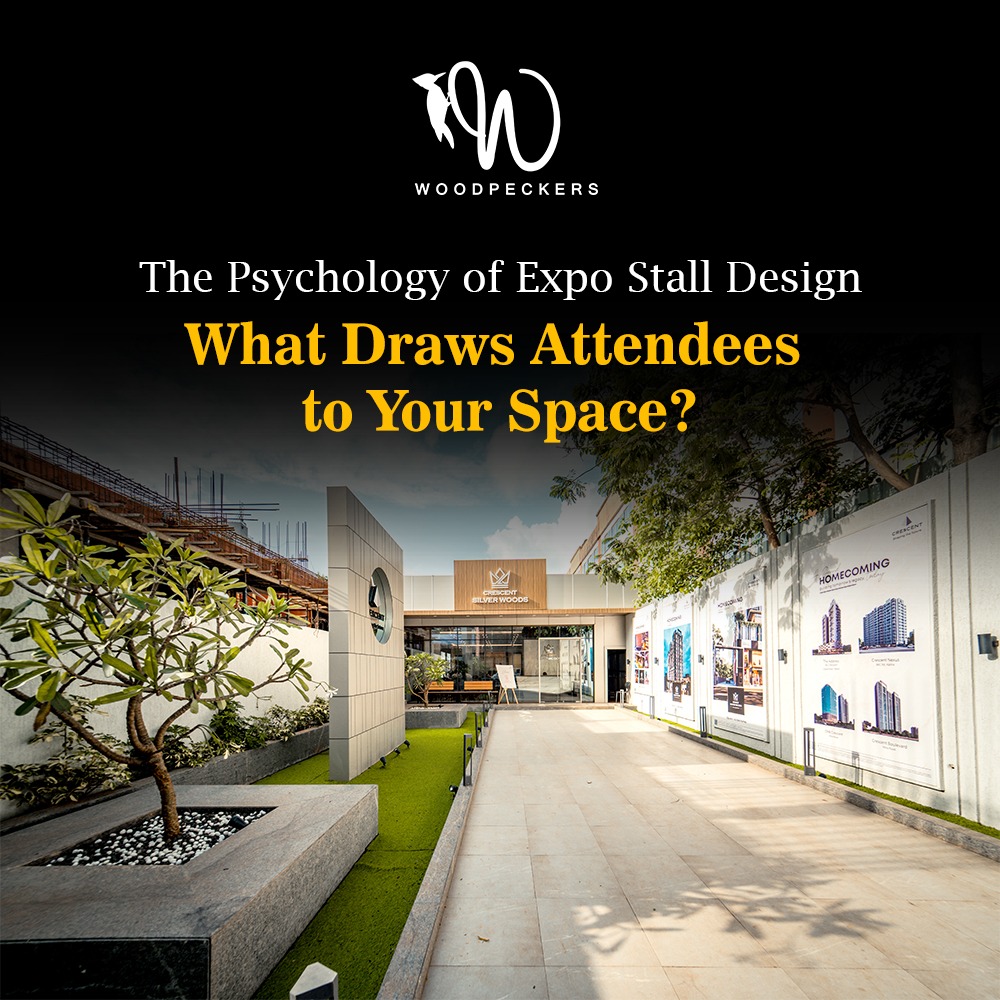In the bustling world of exhibitions and trade shows, making a memorable impression is key to standing out from the crowd. Expo stall design plays a crucial role in this endeavour. By understanding and leveraging human psychology, businesses can create booths that not only attract attention but also engage and retain it. This blog delves into the psychological principles behind stall design, exploring how colour theory, layout, and visual triggers can influence attendee behaviour.
Colour Theory: Setting the Mood
Colour is one of the most potent tools in creative exhibition booth design. It influences mood, behaviour, and perception. Understanding the psychological effects of colours can significantly enhance corporate stall design.
- Red: This colour is associated with excitement, passion, and urgency. It can stimulate visitors’ attention and create a sense of urgency. However, overuse can be overwhelming, so it’s best employed strategically.
- Blue: Often linked with trust, calmness, and professionalism, blue can help establish a reliable and serene environment. It’s a great choice for businesses aiming to convey stability and security.
- Green: This colour represents growth, freshness, and balance. It is particularly effective for stalls focusing on sustainability or health.
- Yellow: Known for its stimulating and cheerful nature, yellow grabs attention and can create a positive atmosphere. It’s ideal for engaging with a lively audience but should be used sparingly to avoid causing visual fatigue.
Layout and Flow: Guiding the Journey
The layout of an expo stall design is more than just a matter of aesthetics; it’s about guiding attendees through a journey. The design should facilitate smooth flow and easy navigation, reflecting a deep understanding of human behaviour.
- Open and Inviting Spaces: An open layout encourages exploration and interaction. Creating an inviting space with clear entry and exit points allows visitors to wander freely and engage with your brand without feeling trapped.
- Zoning: Effective stall design often employs zoning to manage different areas for various functions. For instance, a demonstration area, a meeting space, and a product display zone. This segmentation helps in directing visitor traffic and ensures that each segment serves its intended purpose.
- Visual Hierarchy: Using visual hierarchy, such as larger fonts and prominent displays for key messages, helps in directing attention to important information. It ensures that even from a distance, the most critical elements of your stall catch the eye.
Visual Triggers: Capturing Attention
Creative exhibition booth design relies heavily on visual triggers to capture attention and spark interest. These triggers leverage the brain’s natural tendencies and preferences.
- Dynamic Displays: Incorporating elements such as motion graphics or interactive screens can captivate visitors. Movement naturally draws the eye, making dynamic displays effective for engaging attendees and holding their attention.
- Lighting: The strategic use of lighting can highlight specific areas of your stall and create focal points. Bright, well-lit areas attract attention, while softer lighting can create a more relaxed atmosphere in designated zones.
- Tactile Elements: Including interactive or tactile elements encourages visitors to engage physically with the stall. This could be through touchscreens, product samples, or hands-on demonstrations, providing a multi-sensory experience that deepens the connection with your brand.
Psychological Triggers for Engagement
Understanding psychological triggers can also enhance your exhibition stall fabricators’ approach to design. Certain triggers can influence how long attendees stay at your stall and how they perceive your brand.
- Reciprocity: Offering something for free, such as branded merchandise or a small gift, can create a sense of reciprocity. Visitors who receive a gift are more likely to engage with your stall and consider your brand favourably.
- Social Proof: Incorporating elements of social proof, such as testimonials or case studies, can build trust and encourage visitors to spend more time at your stall. Seeing that others have had positive experiences with your brand can influence new visitors’ perceptions.
- Scarcity: Creating a sense of urgency through limited-time offers or exclusive promotions can encourage immediate action. Highlighting scarcity effectively can drive more foot traffic and prompt quicker decision-making.
The Role of Branding
Consistent branding throughout your corporate stall design ensures that your message is clear and memorable. Strong visual branding elements, such as logos, taglines, and brand colours, should be seamlessly integrated into the design.
- Consistency: Ensuring that your stall’s design aligns with your overall brand identity helps in reinforcing brand recognition. This consistency should extend from colour schemes to typography and messaging.
- Thematic Elements: Incorporating thematic elements related to your brand’s message or values can enhance the overall experience. For example, a stall promoting eco-friendly products might use recycled materials in its design.
Measuring Success
The post-event analysis is crucial for understanding the effectiveness of your expo stall design. Collecting feedback from attendees, monitoring engagement levels, and analysing lead generation can provide valuable insights.
- Visitor Feedback: Gathering direct feedback from visitors can reveal what aspects of your stall were most engaging and which areas need improvement.
- Engagement Metrics: Tracking metrics such as time spent at the stall, interaction rates, and the number of leads collected helps in assessing the overall success of the design.
- Sales and Follow-Up: Evaluating the number of conversions or follow-up actions taken as a result of the exhibition provides a clear measure of your stall’s impact on your business objectives.
The psychology behind expo stall design is a fascinating field that combines colour theory, layout strategies, and visual triggers to create engaging and effective exhibition spaces. By understanding how these elements influence human behaviour, businesses can craft stalls that not only attract attention but also foster meaningful interactions. Whether you’re working with exhibition stall fabricators or developing your corporate stall design, integrating these psychological principles will enhance your creative exhibition booth design and leave a lasting impression on your audience.







